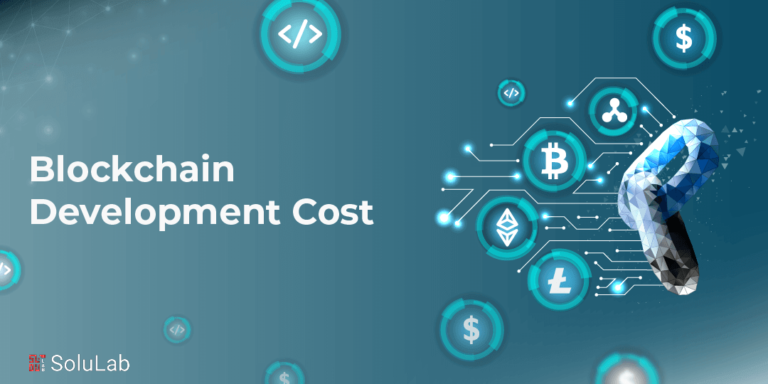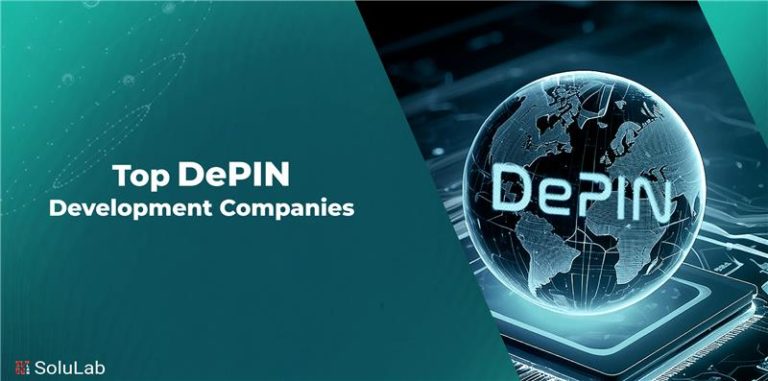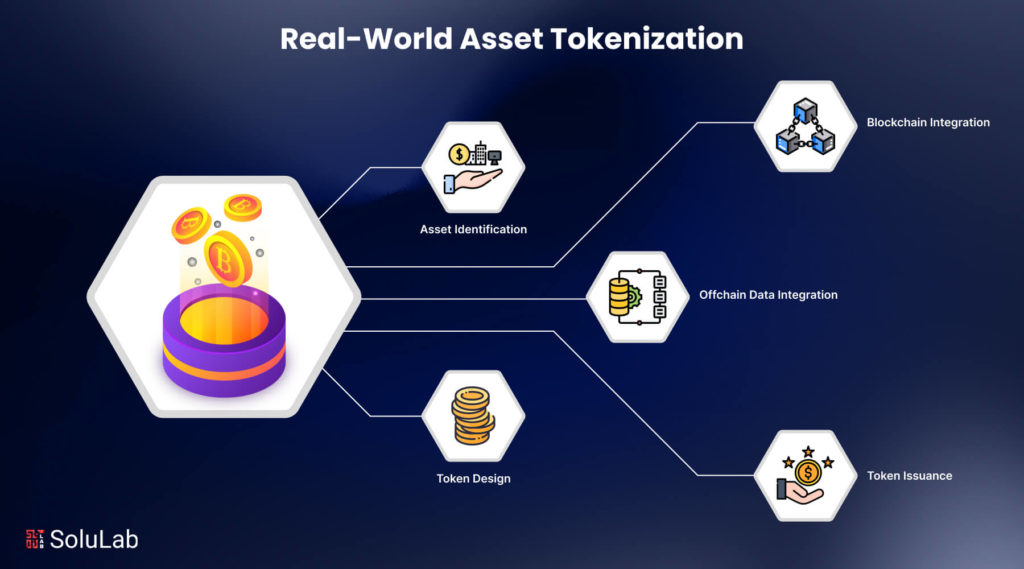
The recent upswing in the cryptocurrency market has directed a substantial amount of wealth, which helped in the development of a strong worldwide decentralized framework. With a potential market size in the hundreds of billions of dollars, real-world asset (RWA) tokenization is one of the biggest market opportunities in the blockchain sector. Anything valuable might theoretically be tokenized and added to the chain.
Since more projects aim to tokenize a wide range of assets, including currency, commodities, real estate, and much more, tokenized RWAs are a developing market niche in the digital asset business.
According to projections from the Boston Consulting Group, global clearing and settlement costs alone may save as much as $20 billion a year through the tokenization of assets. Looking ahead to 2030, there’s a chance to get into the $16 trillion market for tokenized illiquid assets, which makes up only a tiny portion of the total notional value of holdings in both the public and private domains.
In this blog, we will provide a comprehensive and authorized source to help readers understand the complex environment of asset tokenization. This comprehensive guide demonstrates the conceptual, blockchain development technology, and practical elements of token development for real-world assets on the blockchain development company.
What are Real-World Assets (RWA)?
Tokenized real-world assets (RWAs) are powered by blockchain digital tokens that reflect tangible and traditional financial assets, including cash, commodities, stocks, credit, bonds, artwork, and intellectual property. The tokenization of real world assets represents a major change in how these assets can be used, exchanged, and managed, opening up a plethora of fresh prospects for both blockchain-powered investment services and a wide range of non-financial use cases based on cryptography and decentralized consensus.
Asset tokenization is one of the most promising applications for blockchain technology, featuring an estimated market size that includes practically all of humanity’s economic activities. The future of finance is onchain, with hundreds of blockchains sustaining trillions of dollars in tokenized RWAs on a shared substrate made up of blockchain and distributed ledger technologically driven networks linked by a universal interoperability protocol.
Different Types of Real-World Assets
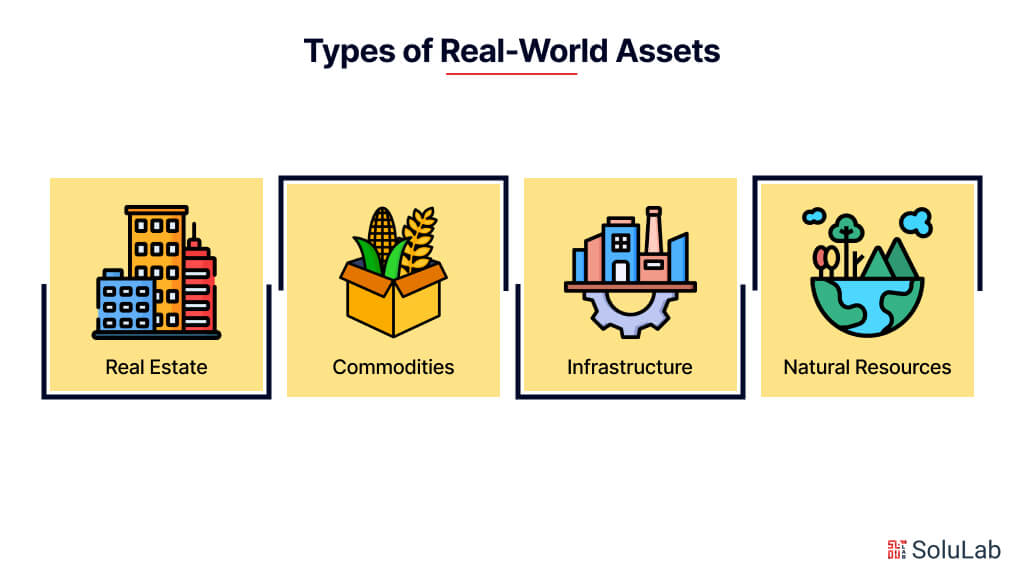
Real asset tokenization opens avenues for diverse investment opportunities by digitizing tangible assets. Let’s look into the primary categories eligible for RWA tokenization:
1. Real Estate: Encompassing commercial, residential, and industrial properties, as well as natural resources, real estate offers intrinsic value and income streams through appreciation and rentals. However, it also entails maintenance costs and market fluctuations.
2. Commodities: Raw materials like oil, wheat, and gold constitute commodities, possessing inherent value and commonly traded on exchanges or through derivative contracts.
3. Infrastructure: Critical for economic activities, infrastructure comprises transportation systems, public utilities, and facilities like roads, power plants, and water treatment plants. These assets provide essential services to both businesses and communities.
4. Natural Resources: Essential for economic development and human survival, natural resources include renewable and non-renewable assets such as forests, minerals, and wind. These resources are pivotal for sustaining various industries and ecosystems.
Real-world asset tokenization revolutionizes investment landscapes, offering fractional ownership and liquidity to investors while streamlining processes and enhancing accessibility to traditionally illiquid assets.
Tokenizing Real-World Assets
Real-world assets are tokenized by embodying their ownership rights as onchain tokens. This technique generates a digital copy of the underlying asset, allowing for on-chain administration of the asset’s ownership rights and bridging the gap between physical and digital assets.
Tokenized assets provide more liquidity, greater access, transparent onchain administration, and lower transactional friction than traditional assets. In the context of financial assets, tokenizing RWAs also integrates the distribution, trading, clearing, settlement, and safeguarding processes into a single layer, resulting in a more simplified onchain financial system with lower counterparty risk as well as better capital mobilization.
Process of Tokenizing Real-World Assets
Tokenizing real-world assets involves a structured process with distinct stages:
1. Asset Identification
Selecting the real-world asset for tokenization, considering its market value, potential liquidity, and regulatory compliance.
2. Token Design
Defining the characteristics of the token, such as whether it’s fungible or non-fungible, and determining the token standard to be followed, such as ERC20 or ERC721. These specifications lay the foundation for the token’s functionality and interoperability.
3. Blockchain Integration
Choosing a suitable blockchain network, whether public or private, for issuing the tokens. Integration with protocols like Chainlink Cross-Chain Interoperability Protocol (CCIP) enhances the token’s accessibility across different blockchain platforms.
4. Offchain Data Integration
Leveraging high-quality offchain data from trusted sources like Chainlink oracles to ensure the accuracy and reliability of information related to the tokenized asset. Verification services such as Chainlink Proof of Reserve (PoR) can be utilized to uphold transparency regarding the assets backing the tokens.
5. Token Issuance
Deploying smart contracts on the selected blockchain network, minting the tokens according to the predefined specifications, and making them available for trading or utilization. This step marks the culmination of the tokenization process, providing stakeholders with access to fractional ownership and liquidity of the real-world asset.
Advantages of Real-World Asset Tokenization
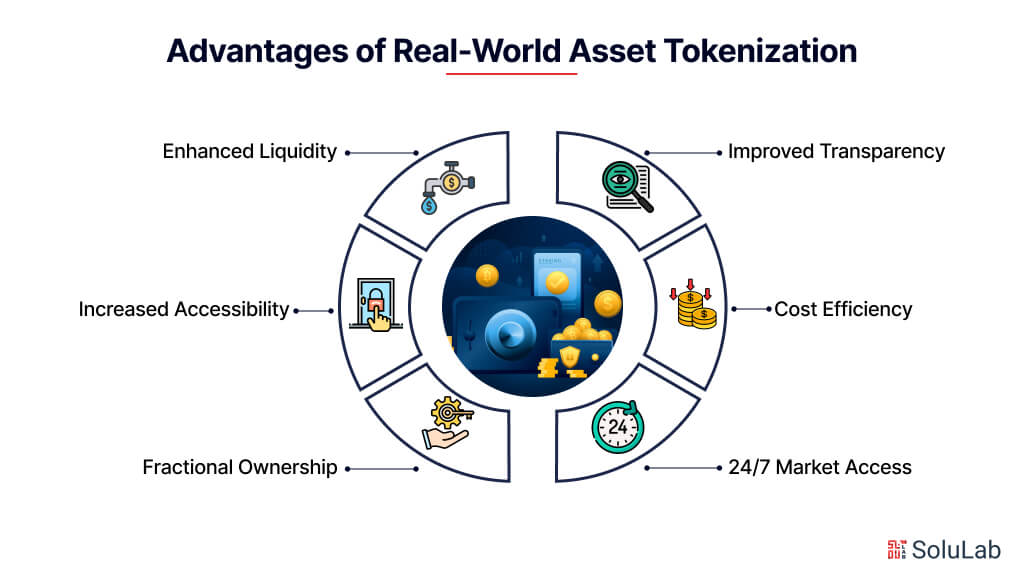
Tokenizing real-world assets yields several advantages:
1. Enhanced Liquidity: Tokenization facilitates increased market liquidity for traditionally illiquid assets by providing globally accessible liquidity conditions through blockchain ecosystems. Chainlink’s Cross-Chain Interoperability Protocol (CCIP) further supports cross-chain activity, bolstering liquidity.
2. Improved Transparency: Tokenized assets, being represented on the blockchain, ensure transparency and auditable asset management. This transparency reduces systemic risks by accurately determining the level of leverage and risk within the system.
3. Increased Accessibility: Tokenized real-world assets expand the potential user base by simplifying access through blockchain-based applications. Fractional ownership enables a broader set of users to utilize assets that would otherwise be inaccessible to them, fostering greater inclusivity in asset ownership.
4. Cost Efficiency: Tokenization of real-world assets reduces transaction costs associated with traditional asset trading and management. Smart contracts streamline processes such as transfer of ownership, dividend distribution, and asset management, resulting in cost savings for investors and asset owners.
5. Fractional Ownership: Tokenization allows for the division of ownership into smaller, more affordable fractions. This democratizes investment opportunities, enabling individuals with limited capital to participate in asset ownership and diversify their investment portfolios.
6. 24/7 Market Access: Tokenized assets provide round-the-clock market access, allowing investors to trade assets anytime, anywhere. This eliminates the constraints of traditional market hours and geographical barriers, fostering a more dynamic and inclusive investment environment.
Read Blog: RWA Tokenization in Investment
Challenges and Risks in Real-World Asset Tokenization
Tokenizing real-world assets comes with several risks and challenges that must be addressed for seamless buying, selling, and trading experiences. Here are some of them:
- Regulatory Ambiguity: The evolving regulatory landscape governing tokenized assets creates uncertainty and compliance challenges. Varying regulations across jurisdictions can impede token issuance, trading, and ownership.
- Standardization Deficiency: The absence of standardized practices and protocols for real-world asset tokenization can hinder interoperability, liquidity, and market adoption. This lack of standardization may result in inefficiencies, fragmentation, and limitations in scalability and accessibility.
- Security Vulnerabilities: Blockchain-based systems are susceptible to fraud, cybercrimes, and security breaches. The irreversible nature of blockchain transactions exacerbates the impact of security incidents, posing risks to asset ownership.
- Market Illiquidity: Despite potential liquidity enhancements, asset tokenization may face market illiquidity due to limited investor demand, technological constraints, and regulatory issues. This may lead to price volatility and challenges in trade execution.
- Custody and Asset Management Challenges: Robust custody and asset management solutions are essential to safeguard tokenized assets against theft, fraud, and unauthorized access while ensuring regulatory compliance. Implementing such solutions may present operational and technological hurdles.
- Market Fluctuations: The market for tokenized assets may be susceptible to fluctuations or manipulations through bots or algorithms. Inadequate management or monitoring of these entities can lead to market manipulation.
- Technological Risks: Limited technology access and technical failures can result in network congestion, scalability issues, and interoperability challenges, disrupting the asset tokenization platform and causing financial losses.
- Valuation Complexity: Determining the fair market value of tokenized assets, particularly real estate or artifacts, can be challenging. Varied valuation methodologies may lead to pricing discrepancies, complicating asset pricing.
Use Cases and Real-World Examples
Here are some real-world examples of how RWA tokenization has been used to transform businesses:
- USDT (Tether): The pioneering and most thriving example of currency tokenization to date. This project serves as a universal currency standard within the cryptocurrency realm.
- Lofty: Through tokenization, residential real estate, including houses and condos, becomes more accessible for investment, enabling individuals to participate in the real estate market with greater ease.
- Carbcoin: Our company’s successful carbon credit tokenization case. 4IRE designed a marketplace dedicated to carbon credits and created a native token to facilitate efficient and standardized trading.
- Agrotoken: This project allows farmers to tokenize their harvest, such as grains, to exchange these digital assets for money, services, and other goods on digital exchanges. Tokenized grain is also accepted as collateral for loans.
Blockchain Protocols for Real-World Asset Tokenization
Due to varying features, selecting the appropriate blockchain protocol is critical when tokenizing real-world assets like real estate, commodities, and loans. Here are several options to consider:
1. Ethereum
Renowned for its robust smart contract functionality, Ethereum is a popular choice for real-world asset tokenization. It enables the seamless creation of programmable digital assets using blockchain. The ERC-20 standard is widely utilized for its interoperability and compatibility.
2. Hyperledger Fabric
With its modular architecture, Hyperledger Fabric is widely adopted for asset tokenization. It offers a range of privacy features and access controls, making it suitable for compliant asset tokenization solutions in domains such as finance and logistics.
3. Stellar
Stellar blockchain is favored for real-world assets with high transaction volumes or liquidity requirements. It facilitates fast and cost-effective transactions, supported by a built-in decentralized exchange for seamless asset trading.
4. R3 Corda
Designed primarily for enterprise applications, Corda by R3 emphasizes data security and privacy. It is well-suited for tokenizing assets like intellectual properties and real estate, particularly in sectors where regulatory compliance is crucial.
5. Tezos
Tezos stands out for its on-chain governance and strong verification capabilities, ensuring security and flexibility in asset tokenization. Its self-amending protocol supports the evolution of networks, offering long-term stability and compatibility for asset tokenization endeavors.
Factors to Take into Account Before Beginning the Token Economy
Before accessing the token development market, consider creating a solid business model aligned with tokenomics. Evaluate the smooth integration of tokens into your blockchain platform, assuring user-friendly interfaces. Prioritize cybersecurity steps to prevent attacks. Navigating regulatory compliance, including securities legislation, AML, and KYC standards, is critical for legal acceptability and user confidence.
1. Business Model
Establishing a robust business model is crucial when joining the token development market. It is critical to identify how tokens will be used inside your ecosystem, whether as a utility or a security, as well as comprehend the economic incentives for token holders. Assessing tokenomics’ feasibility assures alignment with corporate objectives, user engagement, and long-term sustainability. A well-defined business model establishes the foundation for a successful token development economy.
2. Platform Integration Process
The easy integration of tokens into your blockchain platform is an important factor. Assessing technical elements, such as selecting the proper blockchain and token standards, assures compatibility and functioning. The integration procedure should be consistent with the entire user experience and blockchain platform requirements. Strong technological infrastructure and user-friendly interfaces help to provide an easy transition into the token market, increasing user adoption and engagement.
Related: Key Trends in Asset Tokenization
3. Cybersecurity
Cybersecurity is a critical consideration while engaging in the token economy. Token-based systems become ideal targets for cyber threats and assaults. Adopting robust cybersecurity measures, such as secure smart contract development, encryption, and frequent audits, is required to protect both the blockchain platform and user assets. A proactive approach to cybersecurity builds confidence among users while mitigating the dangers associated with any flaws in the token ecosystem.
4. Compliances
Before diving into the token economy, it is critical to understand the regulatory environment. Understanding and embracing applicable local and international legislation guarantees legal conformity. This includes resolving concerns such as securities laws, anti-money laundering rules, and Know Your Customer obligations. Collaborating with legal specialists to handle the complicated regulatory environment reduces legal risks and lays the groundwork for a safe and compliant presence in the token development economy.
Real-World Asset Trends for 2025
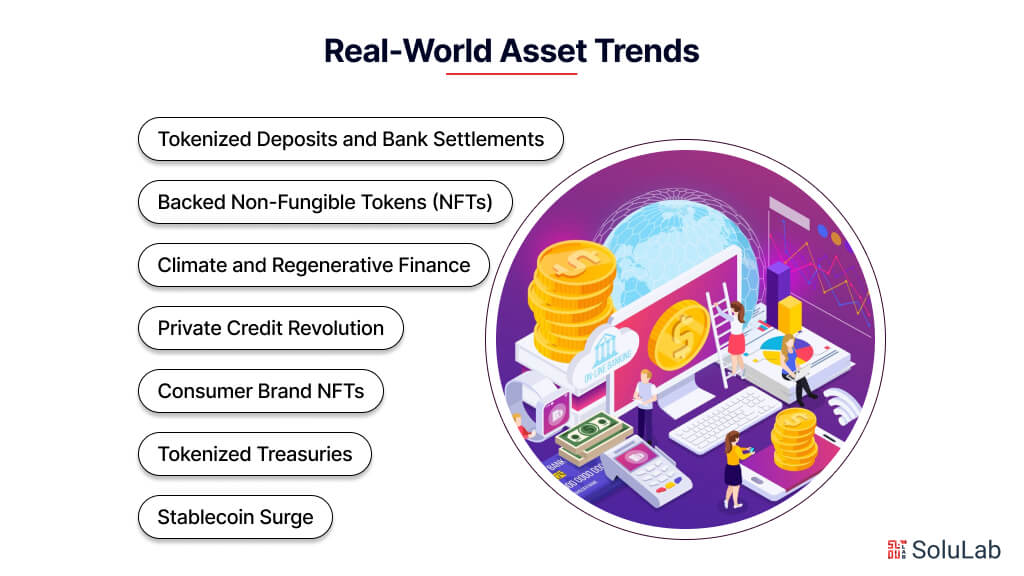
Given the increased demand and popularity of real-world assets in recent years, it is safe to assume that their future seems quite positive. Here are seven RWA trends to watch in 2025:
1. Stablecoin Surge
The rising demand for stablecoins continues to reshape the landscape, offering stability and flexibility in cross-border payments and trading. This trend revolutionizes financial transactions, providing a reliable alternative to traditional currencies.
2. Tokenized Treasuries
Bridging the gap between conventional and decentralized finance, tokenized treasuries present new investment opportunities. These initiatives expand avenues for investment diversification and provide innovative solutions for capital allocation.
3. Private Credit Revolution
SMEs gain unprecedented access to debt capital through private credit solutions, transforming the financing landscape. This trend democratizes borrowing, allowing businesses to tap into various funding sources beyond traditional avenues.
4. Backed Non-Fungible Tokens (NFTs)
Collectible financing experiences a paradigm shift with the introduction of backed NFTs, enabling borrowing and lending against assets like art, coins, and stamps. This innovation brings tangible assets onto the blockchain, unlocking new avenues for asset-backed lending.
5. Consumer Brand NFTs
Engaging consumers through gamification elements and immersive experiences, consumer brand NFTs redefine customer interaction. Integration with the metaverse enhances brand loyalty and fosters unique digital experiences for consumers.
6. Climate and Regenerative Finance
Blockchain technology facilitates transparency and accountability in addressing environmental, social, and governance (ESG) concerns. Initiatives in climate and regenerative finance leverage blockchain’s capabilities to promote sustainability and drive positive social impact.
7. Tokenized Deposits and Bank Settlements
Tokenized deposits and wholesale bank settlements revolutionize banking operations, enhancing efficiency in managing transactions and cross-border settlements. This trend streamlines banking processes and fosters greater interoperability in the financial sector.
How to Make Profits from RWA Tokenization?
The real world asset tokenization sector is flourishing rapidly due to its distinctive advantages and prospects for non-fungible asset owners. Tokenizing assets allows these owners to unlock the liquidity of their unique belongings, enabling them to allocate funds to investment projects and potentially earn substantial returns on investment (ROI). By partnering with a reliable asset tokenization company like 4IRE, RWA owners can maximize profits from their precious assets in the decentralized finance (DeFi) landscape.
On the other hand, buyers of RWA tokens gain access to an array of earning opportunities, including:
1. Fractional Ownership: RWA tokens offer investors the unique opportunity to own a fraction of high-value assets such as real estate, gold, or fine art at a reasonable cost. Diversifying your portfolio with these rare and tangible assets can be a rewarding experience.
2. Rental Income: Investing in RWA tokens backed by rental properties grants you the right to a portion of the rental income generated by the building’s owner. This steady stream of passive income can provide financial stability and long-term growth.
3. Trading Opportunities: For crypto enthusiasts, RWA tokens present a lucrative trading opportunity. By monitoring market trends and executing timely trades on various exchange platforms, investors can capitalize on the volatile prices of these tokens and generate substantial profits.
4. Crowdfunding Projects: RWA tokens enable crowdfunding for exclusive purchases that might otherwise be inaccessible due to financial limitations. By pooling resources, investors can collectively acquire fractional ownership of high-value assets, participating in deals that offer significant return potential.
Related: ICO Vs Crowdfunding
5. Staking and Yield Farming: Certain RWA assets can be deposited into liquidity pools in exchange for an attractive annual percentage yield (APY). This staking and yield farming option provides a stable and passive income stream, allowing investors to earn rewards without actively trading.
By owning RWA tokens, individuals gain access to a tangible earning opportunity. This presents an excellent chance to diversify investment portfolios and venture into specialized niches that typically have high entry thresholds, making them inaccessible to retail investors with limited budgets.
The Bottom Line
Finally, real-world asset tokenization based on blockchain development is an important moment in finance and ownership. This comprehensive guide highlights the diverse surroundings, including the philosophical underpinnings, technological complexities, and practical applications of asset token creation. The developing trends and advances in this field offer more accessibility, transparency, and efficiency. However, concerns like as security threats and regulatory difficulties necessitate careful thought. As blockchain development companies accept fractional ownership, decentralized finance, and diverse tokenized assets, key takeaways highlight the importance of a strategic business model, effortless blockchain platform integration, robust cybersecurity measures, and steadfast regulatory compliance. Successfully managing these factors assures a future in which real-world asset tokenization challenges existing frameworks, creating new possibilities for investors and changing global financial ecosystems.
Being a top real-world asset tokenization company, SoluLab empowers businesses in this sector by providing comprehensive solutions tailored to their needs. Utilizing expertise in blockchain technology, SoluLab assists clients in defining robust tokenization strategies, ensuring seamless integration, and navigating regulatory compliance. With a focus on cybersecurity and user experience, SoluLab enables clients to mitigate risks and enhance trust among stakeholders. Contact us today to start your journey towards unlocking the potential of real-world asset tokenization.
FAQs
1. What is real-world asset tokenization?
Real-world asset tokenization refers to the process of digitizing tangible assets, such as real estate, commodities, and artwork, by representing them as blockchain-based tokens. These tokens are backed by the underlying assets and can be traded or transferred electronically, offering benefits like fractional ownership and increased liquidity.
2. How does real-world asset tokenization work?
Real-world asset tokenization involves several steps, including asset selection, token specification, blockchain integration, off-chain data connection, and issuance. Assets are selected based on their intrinsic value and potential for tokenization. Tokens are then created according to predefined specifications and deployed on a blockchain network, ensuring transparency and security.
3. What are the benefits of real-world asset tokenization?
Real-world asset tokenization offers numerous benefits, including increased liquidity, fractional ownership opportunities, enhanced transparency, and accessibility to traditionally illiquid assets. It also streamlines processes like asset management and trading, while reducing transaction costs and minimizing barriers to entry for investors.
4. What are the challenges associated with real-world asset tokenization?
Challenges in real-world asset tokenization include regulatory uncertainty, lack of standardization, security vulnerabilities, market illiquidity, and complexities in custody and asset management. Navigating these challenges requires careful consideration of legal, technical, and operational aspects to ensure compliance and mitigate risks.
5. Is real-world asset tokenization suitable for all types of assets?
While real-world asset tokenization can be applied to a wide range of assets, not all assets may be suitable for tokenization. Factors such as regulatory compliance, asset divisibility, and market demand need to be considered before initiating the tokenization process. Assets with clear ownership rights, intrinsic value, and potential for liquidity are generally more conducive to tokenization.
6. How can SoluLab help businesses with real-world asset tokenization?
SoluLab offers comprehensive solutions to businesses seeking to tokenize real-world assets. Our expertise in blockchain technology enables us to assist clients in defining robust tokenization strategies, ensuring seamless integration, and navigating regulatory compliance. From asset selection to token issuance, SoluLab guides clients through every step of the process, using our technical prowess and industry experience to unlock the potential of tokenized assets. With a focus on security, transparency, and usability, SoluLab empowers businesses to harness the benefits of real-world asset tokenization and drive innovation in their respective industries.




